A Lunar Eclipse was taking place during the evening. I was ready with my camera, telephoto lens and tripod.
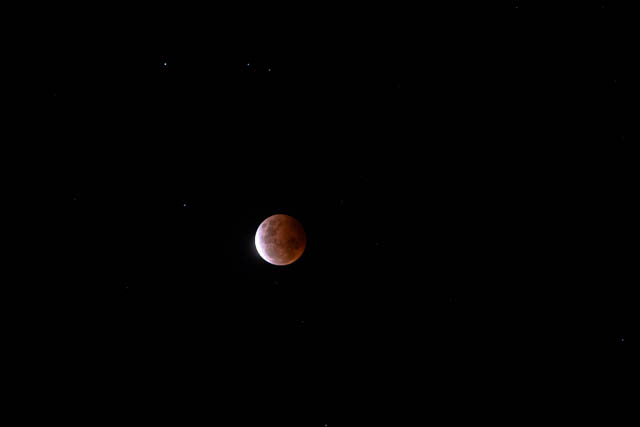
It was going to be a Super Blood Moon. “Super” because the Moon was at a close point in its orbit – making it larger in apparent size than it often is, and “Blood” because of its red colour when totally eclipsed.
Here are some photos taken as the eclipse was beginning –
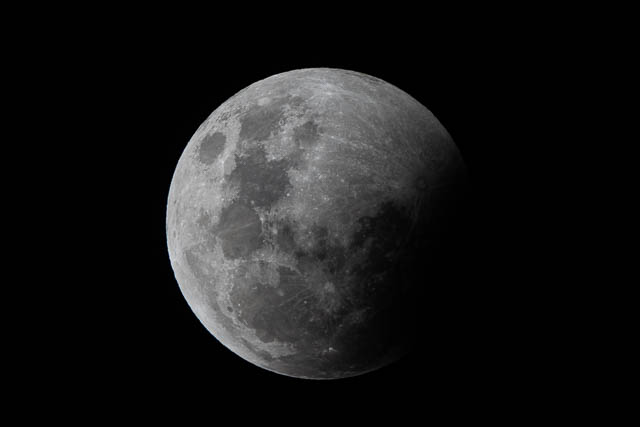
840 mm, 1/800 sec, f9, 400 ISO, taken at 7:45 pm
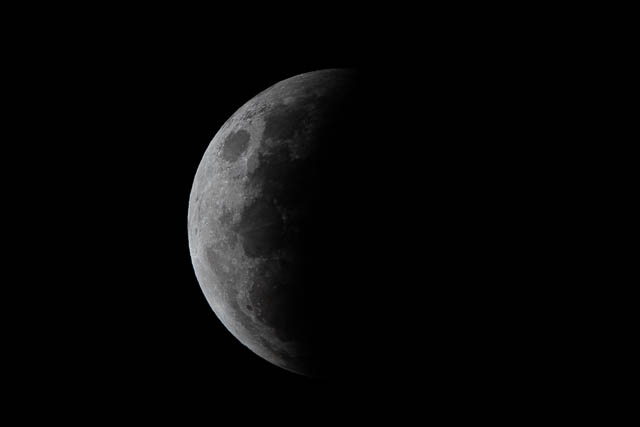
840 mm, 1/800 sec, f9, 800 ISO, taken at 8:19 pm
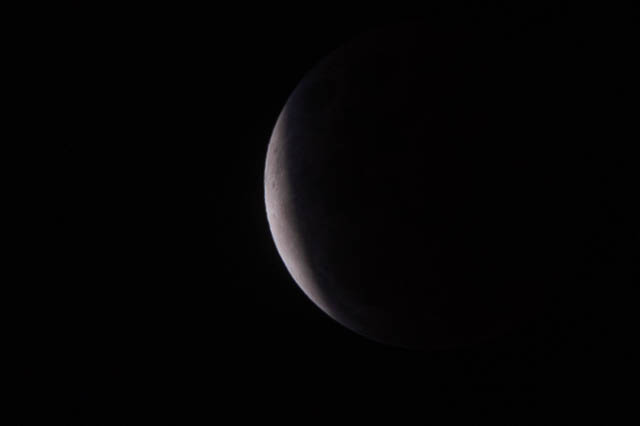
840 mm, 1/100 sec, f9, 1600 ISO, taken at 8:50 pm
The period of total eclipse was from 9:11 pm to 9:25 pm. The photo below was taken at 9:15 pm (840 mm, 1/4 sec, f9, 6400 ISO).
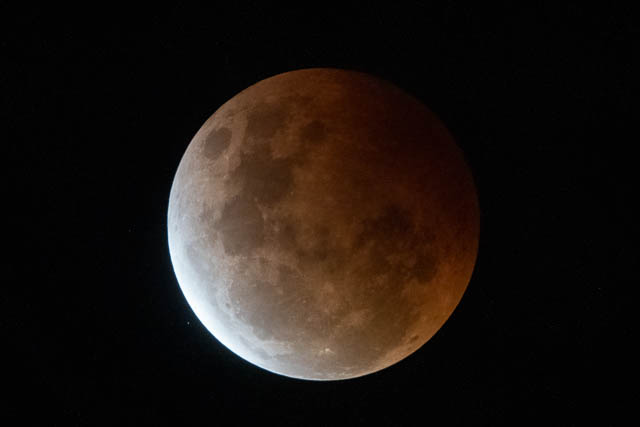
It was now what we call a “Blood Moon”, the red colour is caused by Rayleigh Scattering and refraction of light from the Earth’s atmosphere. But the lower left corner is bluish. Why is this? According to this website – “This happens because the Earth’s Ozone layer scatters red light and lets through some of the blue light that is otherwise filtered out by other layers of the atmosphere.” It happens close to the start and end of the period of totality. On this occasion, it probably was present all the time because the duration of totality was relatively short.
I was also after some photos showing the background stars if possible, which should be now visible in the period of total eclipse. It would have been great to be at dark sky site, like in the Blue Mountains, and I had contemplated travelling there. But wind was forecast – so conditions may have been difficult. Instead I used a “expose to the right” technique. This involved using setting close to what you would use in a dark site, deliberately over exposing the photo due to light pollution. Then by post processing darkening the image. This worked out reasonable well. You can see lots of background stars and even the glow of the Milky Way.
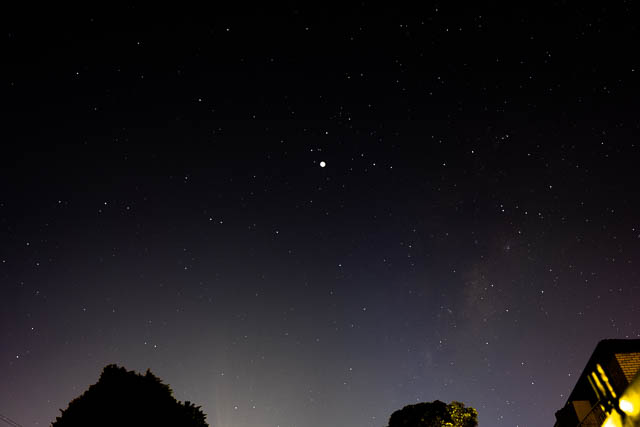
https://www.timeanddate.com/eclipse/why-does-moon-look-red-lunar-eclipse.html
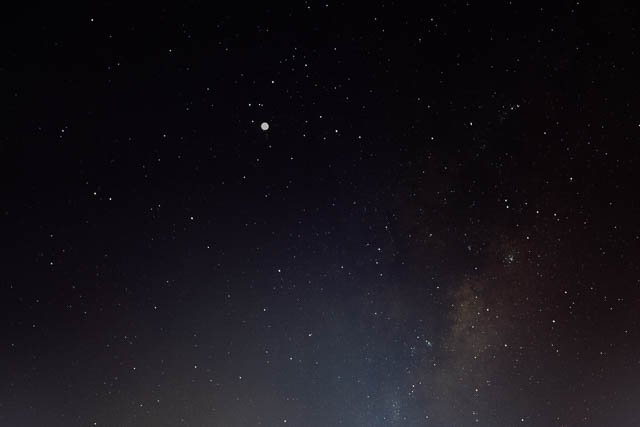
24 mm, 15 sec, f1.4, 1600 ISO
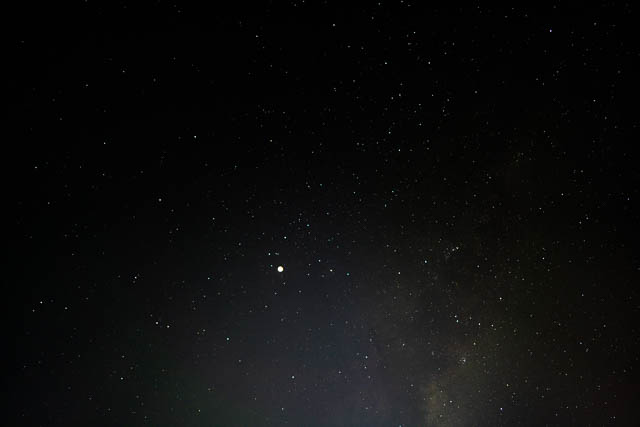
24 mm, 10 sec, f1.4, 400 ISO
It is interesting to see some of the photographs posted on social media of the eclipse. Some that have been popular and shared a lot were appalling. The people that shared these photos seem to have no knowledge of physics or astronomy. Some featured the Moon in clearly a part of the sky that it never appears in. Some were of the full Moon (not eclipsed) – but darkened and coloured a red shade to make it look blood red. From my photos, you can see the moon is not uniformly red. Some of the composite images – showed an enlarged Moon in the might sky, behind an object in the foreground that could clearly not be in focus if it had been one photo.

I agree with your opinion of those dreadful composite images! The Astronomical Society of Victoria shared one on Facebook. The moon was in the wrong part of the sky, moved left to right, changed size and moved rapidly past background stars. I pointed out that many people in the comments seemed to think it was a genuine multiple exposure and was informed that “we made it clear that it’s a composite”. So I pointed out that a lot of people seemed to have been misled by the image and was told to enjoy the quality of the “great photographic work”. That’s when I gave up I guess the 21K likes and 1.6K comments are more important than reality.
I guess the 21K likes and 1.6K comments are more important than reality.
David, I had my binoculars out and watched it happening. A great event. Thanks for the pictures.